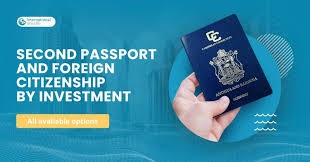In today’s fast-paced digital world, learning has become easier and more accessible than ever before. With the advent of Learning Management Systems (LMS), educators and trainers now have an effective tool to deliver courses, training programs, and other educational content online.
However, simply having an LMS is not enough; it’s essential to create engaging content that keeps learners motivated and eager to continue their journey. This blog will explore some best practices for creating engaging content within your LMS, like Saba Cloud App. So, read on and gain valuable insights.
1. Start with Clear Objectives:
The first step in creating engaging content is to define clear objectives for each learning module or course. What do you want your learners to achieve through this content? Setting specific goals helps you stay focused on the desired outcomes and enables learners to understand what they are supposed to get out of the course.
2. Use Variety in Content Formats:
To maintain learner interest and avoid monotony while using an LMS, make sure to incorporate different types of content formats, such as videos, podcasts, interactive quizzes, infographics, case studies, and simulations, into your course material. This variety caters to diverse learning preferences and enhances overall engagement.
3. Create Bite-sized Modules:
Long lectures or extensive reading materials can quickly overwhelm learners and hinder their progress within the LMS. To overcome this challenge, break down your content into bite-sized modules that learners can digest quickly. Each module should cover a specific topic or subtopic comprehensively but concisely.
4. Incorporate Multimedia Elements:
Text-heavy courses can often be tedious for learners; hence, incorporating multimedia elements is crucial for engagement within the LMS environment. Enhance your content by including relevant images, graphs, charts, audio clips, or interactive media wherever possible. These elements capture attention and illustrate concepts effectively.
5. Build Interactivity:
One advantage of using an LMS is the ability to include interactive elements that facilitate active participation and self-assessment. To encourage learners to engage with the content actively, utilize features such as discussion forums, live chats, quizzes, polls, or simulations.
6. Include Real-World Examples:
To make your content relatable and practical, provide real-world examples that illustrate how concepts can be applied in different scenarios. Whether it’s a case study or an anecdote, capturing learners’ attention with tangible connections helps in reinforcing knowledge retention.
7. Encourage Collaboration:
Learning is not a solitary process. Incorporating collaborative activities and group assignments within your LMS fosters active discussions and knowledge sharing among participants. This sense of community augments engagement and allows learners to benefit from diverse perspectives.
8. Offer Immediate Feedback:
When learners are engaged in online courses or training programs within an LMS framework, timely feedback becomes crucial for motivation. Provide immediate feedback on assessments or assignments to reinforce positive behavior and promptly address any gaps in understanding.
9. Personalize Content:
Every learner is unique, with different backgrounds, interests, and learning styles; personalization plays a significant role in engagement. Leverage the capabilities of your LMS to customize content based on individual preferences or progress within the course; this promotes a sense of ownership and a tailor-made learning experience.
10. Continuous Improvement through Analysis:
Lastly, no matter how well-crafted your content may be initially, there is always room for improvement. Regularly analyze learner performance data within your LMS using tracking metrics such as completion rates, quiz scores, forum interactions, or user feedback forms. Use these insights to identify areas where content can be enhanced further for better engagement.
Conclusion:
Creating engaging content within your LMS is critical to maximizing learner participation and achieving successful educational outcomes. By following these best practices—setting clear objectives, using varied formats, breaking down modules, incorporating multimedia and interactive elements, providing real-world examples, encouraging collaboration, offering timely feedback, personalizing content, and continuously analyzing performance—you can ensure that your LMS content delivers an immersive and practical learning experience.



